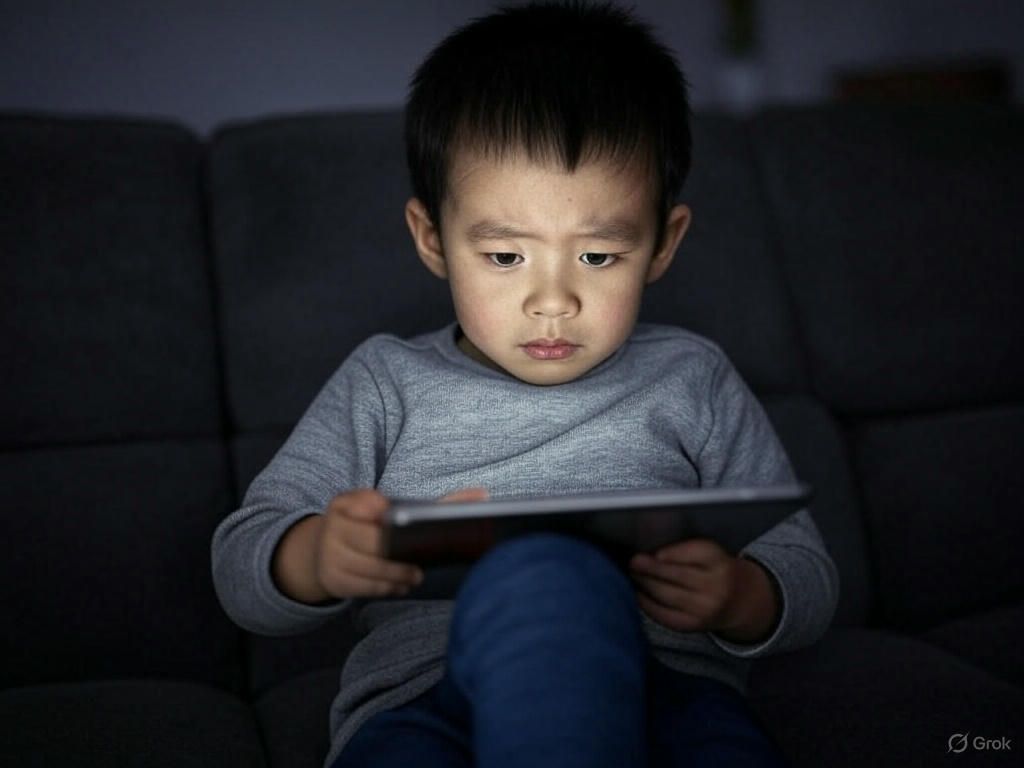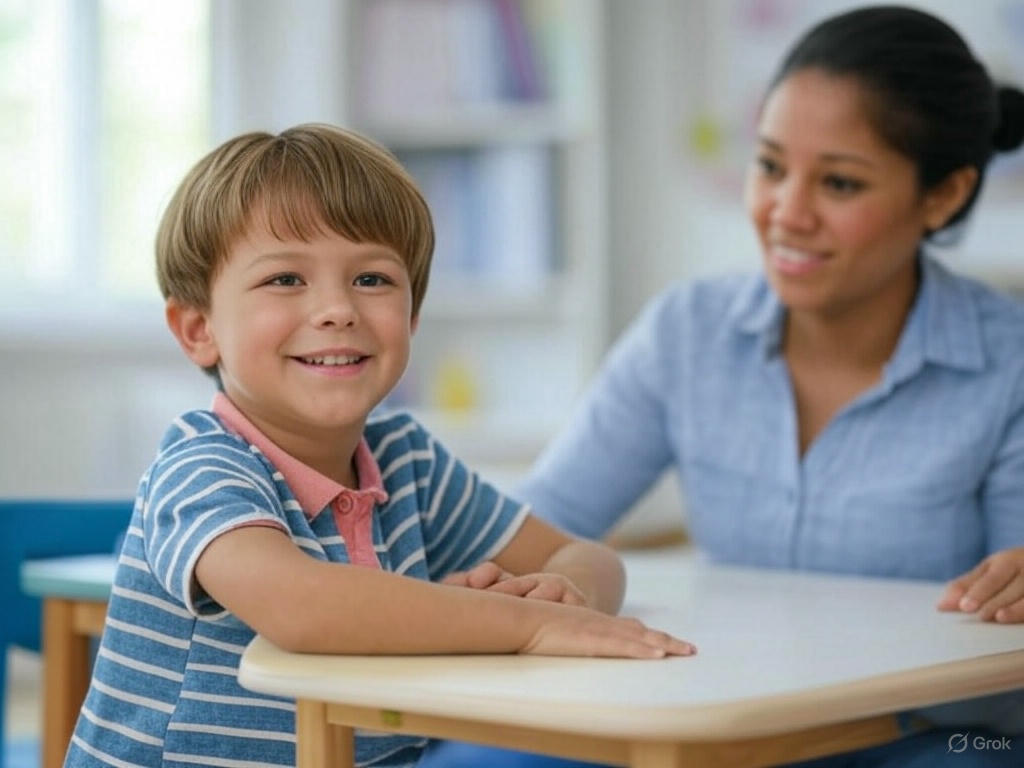Signs of ADHD in Children Age 3–6: Early Symptoms and When to Seek Help
What Is ADHD in Young Children?
Attention Deficit Hyperactivity Disorder (ADHD) is a neurodevelopmental condition that often begins in early childhood. It is characterized by persistent patterns of inattention, hyperactivity, and impulsivity that interfere with a child’s daily functioning and development. Recognizing the signs of ADHD in children age 3–6 is crucial for early intervention and support.
ADHD in young children can manifest differently than in older kids or adults. At this age, behaviors may be dismissed as typical toddler or preschooler traits, making it harder to identify the condition. However, understanding the early signs can help parents and caregivers differentiate between normal developmental behaviors and potential ADHD symptoms.
According to the Centers for Disease Control and Prevention (CDC), ADHD affects approximately 6 million children in the United States, with many cases beginning before the age of 6. Early diagnosis and treatment can significantly improve outcomes for children with ADHD.
In this article, we’ll explore the key signs of ADHD in children age 3–6, including behavioral symptoms, social challenges, and when to seek professional help.
Early Behavioral Signs of ADHD in Preschoolers
Preschoolers with ADHD often exhibit behaviors that stand out from their peers. These behaviors may include excessive fidgeting, difficulty staying seated, and an inability to focus on tasks appropriate for their age. While all young children can be energetic and distractible, the signs of ADHD in children age 3–6 are more intense and persistent.
- Frequent temper tantrums or emotional outbursts
- Difficulty playing quietly or engaging in calm activities
- Constantly running, climbing, or moving in inappropriate settings
- Struggling to wait their turn during group activities
For example, a 4-year-old with ADHD might struggle to sit through a short story during circle time at preschool, frequently interrupting the teacher or wandering away. These behaviors can disrupt not only their learning but also the classroom environment.
It’s important to note that these behaviors must occur consistently across different settings, such as home, school, and social environments, to be considered potential signs of ADHD.
Difficulty Paying Attention: A Key Indicator of ADHD
One of the hallmark signs of ADHD in children age 3–6 is difficulty paying attention. Young children with ADHD often struggle to focus on tasks or activities that require sustained mental effort, such as puzzles, crafts, or listening to instructions.
Common attention-related symptoms include:
- Being easily distracted by noises, movements, or other stimuli
- Frequently losing toys, books, or other items
- Failing to complete simple tasks or follow through on instructions
- Appearing not to listen when spoken to directly
For instance, a 5-year-old with ADHD might start coloring a picture but abandon it halfway through to play with a toy, forgetting about the original activity entirely. This lack of focus can hinder their ability to learn and complete age-appropriate tasks.
Parents and teachers should monitor these behaviors closely, as they can significantly impact a child’s early learning and social development.
Hyperactivity Symptoms in Children Ages 3–6
Hyperactivity is another prominent symptom of ADHD in young children. While most preschoolers are naturally active, those with ADHD exhibit an unusually high level of energy that is difficult to manage. This is one of the most noticeable signs of ADHD in children age 3–6.
Hyperactive behaviors may include:
- Constantly moving, even in situations where stillness is expected
- Talking excessively or interrupting conversations
- Climbing on furniture or other objects inappropriately
- Inability to sit still during meals or quiet activities
For example, a 3-year-old with ADHD might run around the house nonstop, even when asked to sit down for dinner. This level of activity can be exhausting for parents and caregivers, as well as disruptive in group settings like preschool.
Understanding these hyperactive tendencies can help parents seek appropriate strategies to manage their child’s energy levels effectively.
Impulsivity and Emotional Outbursts in Young Kids
Impulsivity is another key component of ADHD. Children with ADHD often act without thinking, leading to risky or inappropriate behaviors. This impulsivity is one of the defining signs of ADHD in children age 3–6.
Examples of impulsive behaviors include:
- Grabbing toys from other children without asking
- Blurting out answers or interrupting conversations
- Difficulty waiting their turn during games or activities
- Frequent emotional outbursts or meltdowns
For instance, a 6-year-old with ADHD might yell out answers during a classroom activity, even when instructed to raise their hand. These behaviors can lead to social challenges and conflicts with peers.
Parents and teachers can work together to teach children strategies for managing impulsivity, such as using visual cues or practicing turn-taking games.
Struggles with Following Instructions and Rules
Another common sign of ADHD in children age 3–6 is difficulty following instructions and adhering to rules. This can manifest as forgetfulness, disobedience, or an inability to complete tasks.
Children with ADHD may:
- Forget steps in a multi-part instruction
- Ignore rules during games or structured activities
- Require constant reminders to stay on task
- Appear defiant when asked to follow directions
For example, a 5-year-old might be asked to put away their toys before bedtime but instead start playing with a different toy. This behavior is not necessarily intentional but rather a result of their difficulty focusing and remembering instructions.
Providing clear, simple instructions and using visual aids can help children with ADHD better understand and follow rules.
Sleep Challenges Linked to ADHD in Preschoolers
Sleep problems are often associated with ADHD in young children. Many parents report that their child has difficulty falling asleep, staying asleep, or waking up feeling rested. These sleep challenges are another significant sign of ADHD in children age 3–6.
Common sleep-related issues include:
- Restlessness or difficulty settling down at bedtime
- Frequent waking during the night
- Waking up too early in the morning
- Daytime fatigue despite adequate sleep hours
For instance, a 4-year-old with ADHD might resist bedtime routines, running around the house instead of getting ready for bed. This can lead to sleep deprivation, which exacerbates ADHD symptoms during the day.
Establishing a consistent bedtime routine and creating a calming sleep environment can help improve sleep quality for children with ADHD.
Social Interaction Difficulties in Children with ADHD
Social challenges are another common sign of ADHD in children age 3–6. Young children with ADHD may struggle to form and maintain friendships due to their impulsive or hyperactive behaviors.
These difficulties may include:
- Interrupting conversations or games
- Difficulty sharing or taking turns
- Overreacting to minor conflicts
- Being perceived as “too rough” or “too loud” by peers
For example, a 3-year-old with ADHD might grab a toy from another child without asking, leading to arguments or hurt feelings. These behaviors can make it challenging for them to build positive relationships.
Parents and teachers can support social development by teaching children appropriate social skills and providing opportunities for supervised play.
How ADHD Impacts Early Learning and Development
The signs of ADHD in children age 3–6 can significantly impact their early learning and development. Difficulty focusing, following instructions, and managing emotions can hinder their ability to succeed in preschool or kindergarten.
For example, a child with ADHD might struggle to complete simple tasks like tracing letters or participating in group activities. This can lead to frustration, low self-esteem, and academic delays.
Additionally, social challenges can affect their ability to form friendships and develop important interpersonal skills. These early struggles can have long-term implications if not addressed promptly.
Early intervention, including behavioral therapy and educational support, can help children with ADHD overcome these challenges and thrive in their learning environments.
When to Seek Professional Help for ADHD Symptoms
If you notice persistent signs of ADHD in children age 3–6, it’s important to seek professional help. Early diagnosis and intervention can make a significant difference in managing symptoms and supporting your child’s development.
Consider consulting a pediatrician or child psychologist if your child:
- Exhibits consistent inattention, hyperactivity, or impulsivity across multiple settings
- Struggles with daily routines, such as getting dressed or eating meals
- Has difficulty forming friendships or interacting with peers
- Shows signs of emotional distress, such as frequent meltdowns or frustration
Professionals may use tools like behavioral assessments and parent interviews to evaluate your child’s symptoms. They can also recommend strategies, therapies, or educational accommodations to support your child.
For more information on early intervention and inclusive education, visit disability screening resources.
Conclusion
Recognizing the signs of ADHD in children age 3–6 is the first step toward providing the support they need to thrive. From difficulty paying attention to hyperactivity and social challenges, these symptoms can impact various aspects of a child’s life. Early intervention, including professional help and tailored strategies, can make a significant difference in managing ADHD symptoms and promoting healthy development.
If you suspect your child may have ADHD, don’t hesitate to seek guidance from a healthcare professional. With the right support, children with ADHD can overcome challenges and reach their full potential.
FAQ: Signs of ADHD in Children Age 3–6
- What are the early signs of ADHD in preschoolers?
- Early signs include difficulty paying attention, excessive hyperactivity, impulsive behaviors, and struggles with following instructions or rules.
- How can I differentiate between normal behavior and ADHD symptoms?
- While all young children can be energetic and distractible, ADHD symptoms are more intense, persistent, and occur across multiple settings like home and school.
- When should I seek professional help for my child?
- If your child consistently exhibits signs of ADHD that interfere with their daily life, consult a pediatrician or child psychologist for an evaluation.
- Can ADHD affect my child’s learning and social skills?
- Yes, ADHD can impact early learning, emotional regulation, and social interactions



